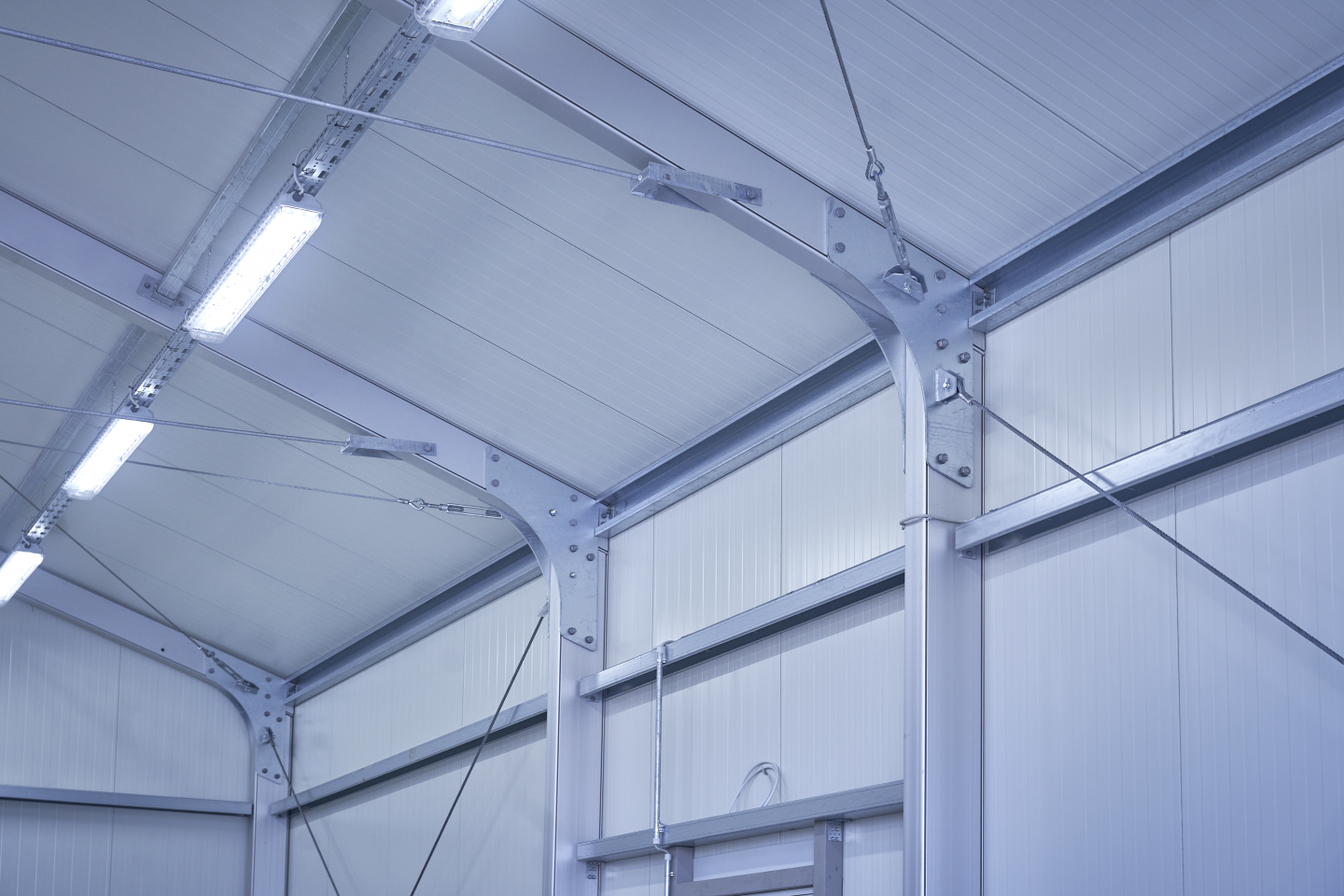What is the wind load capacity of Losberger De Boer buildings?
All buildings and structures are subject to the forces of nature. At Losberger De Boer, we take great care to ensure that our buildings can withstand even heavy or extreme wind speeds. In this article, we will answer all wind-related questions that we often get.
In order to make sure that we always deliver a structure with the appropriate wind load for that region, each hall is meticulously calculated and verified to provide optimal safety and durability, giving you the peace of mind that your structure is well-protected and safe at all time.
The underlying wind loads vary depending on the location and are influenced by numerous factors, such as wind direction, roof shape, height, dimensions, and surfaces. The wind creates different forces, including pressure, suction, and friction forces. In some cases, partially open halls can even generate an internal pressure.
What factors need to be considered when calculating wind loads?
- Hall Height: A higher hall generates a greater wind load, as it is exposed to a larger wind surface area.
- Shape: The shape of the hall has a significant influence on the wind load. For example, a rectangular hall is exposed to a higher wind load than a circular building.
- Openings: Openings in the hall, such as doors, windows, and ventilation openings, can affect the pressure on the hall. If these openings are not properly dimensioned, they can lead to an inbalance in wind load distribution.
- Environment: The environment in which the hall is constructed can affect the wind load. Wind speed and direction can vary greatly depending on the topography, construction, and vegetation of the area. All these factors must be taken into account when calculating the statics of the hall.
Other factors that must be considered when calculating wind loads are the aerodynamic properties of the hall, compliance with standards and norms, and the selection of suitable materials and construction methods. Accurate calculation of wind loads is essential to ensure the stability and safety of the hall.
How does Losberger De Boer calculate wind loads?
Wind loads are defined in specific standards, such as the DIN EN 1991-4. The calculation of wind loads on a structure is typically done by applying aerodynamic principles and using wind load standards like Eurocodes or similar national / local standards.
The fundamental method for calculating wind loads involves determining the aerodynamic forces acting on the surface of the structure. These forces can be determined by considering the wind speed, direction, and duration. To perform an accurate wind load calculation, other factors such as the shape, size, and height of the structure, the position and size of openings, as well as the topography and vegetation in the surrounding area, must also be taken into account.
An important component in the calculation of wind loads is the selection of the appropriate wind load model that reflects local wind conditions most accurately. Eurocodes and other national standards offer different wind load models for different applications to ensure accurate and reliable wind load calculation.
Overall, the accurate calculation of wind loads on a structure is a complex process that requires careful planning, data collection, and the use of specialized tools and techniques.
Which standards do Losberger De Boer event tents and industrial halls meet?
Our structures must comply with Eurocodes, including static calculations, wind and snow loads, as well as steel and aluminum calculations. In addition, our structures comply with specific standards such as DIN EN 13782 for temporary structures - tents.
(article continues below the picture)

What makes Losberger De Boer halls and tents particularly resistant to wind and storms?
Aluminum halls or tents are particularly stable against wind loads due to the use of aluminum profiles as a supporting structure. Aluminum is a very lightweight yet robust material with a high strength and stiffness. It is also corrosion-resistant and, unlike steel, does not rust, which further extends the lifespan of the structure.
The aluminum profiles are designed to provide optimal strength and stiffness and withstand the stresses of wind and snow loads. The profiles are connected with special fasteners to form a strong and stable structure.
In addition to this, aluminum halls and tents can be manufactured in various shapes and sizes to meet the requirements of the project. The flexibility in terms of design and construction allows for structures to be optimized according to specific location conditions, thus ensuring optimal stability against wind loads.
What wind loads can Losberger De Boer tent and hall systems withstand?
Our industrial halls are designed according to Eurocode for wind speeds up to 90 km/h (25 m/s). However, we can reinforce the stability of our halls to withstand higher wind loads according to Eurocode of 112.5 km/h in Europe or ASCE 7 in the USA.
Our event structures are designed according to DIN EN 13782 and Eurocodes for wind speeds up to 100 km/h (28 m/s). Like our industrial halls, our event buildings can also be customized to increase the stability of the structure to withstand higher wind loads.
It is important to note that the wind load speeds specified by Eurocodes and other standards are based on different methods and assumptions and cannot be compared without careful consideration of the specific requirements and limitations of each standard. In addition, the wind speeds used for design also depend on the location and specific characteristics of the structure to be designed.
Therefore, we recommended that you contact us to learn about the specific requirements of the applicable design standard for accurate wind load calculations.
